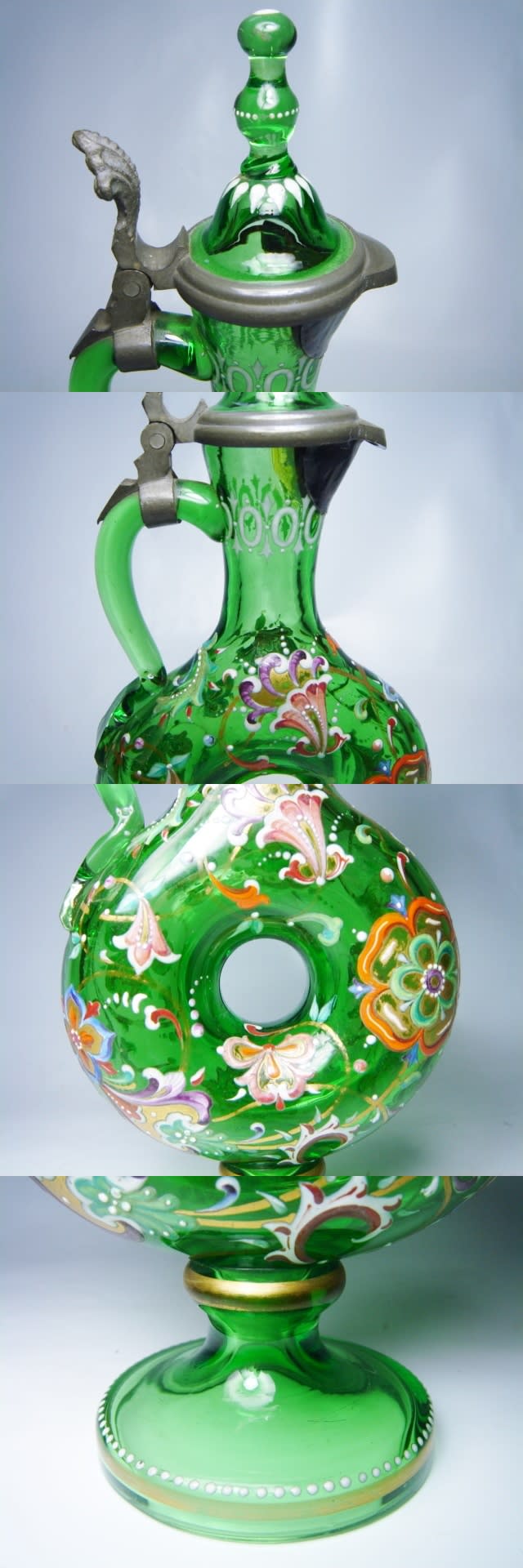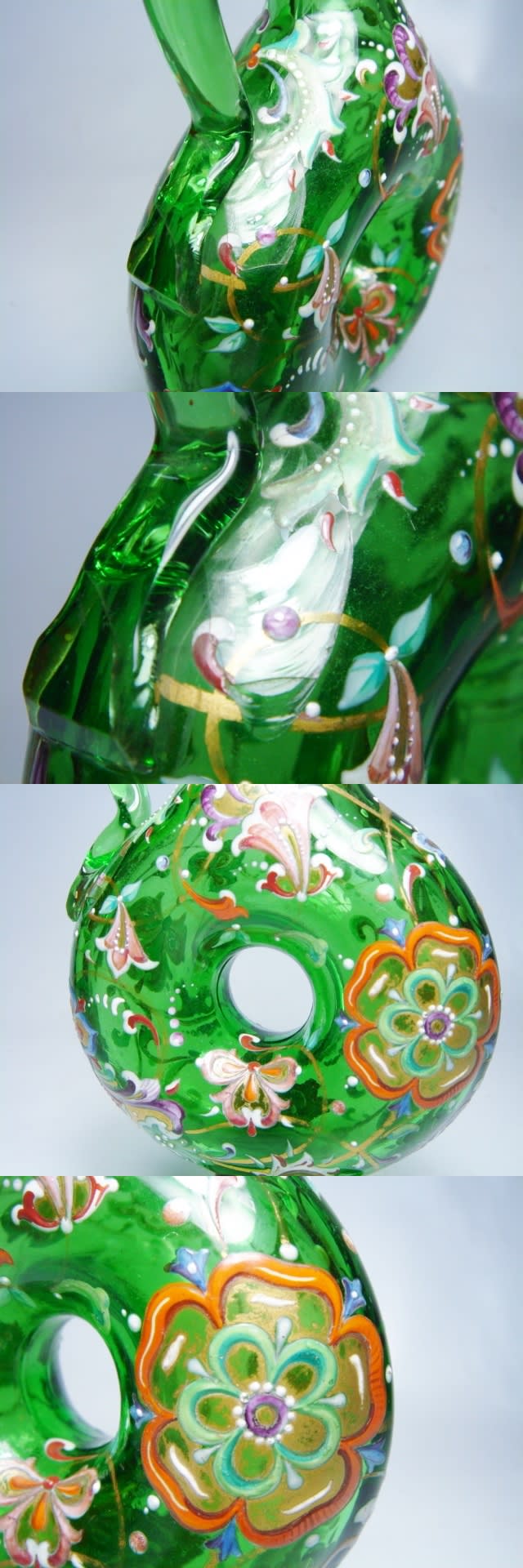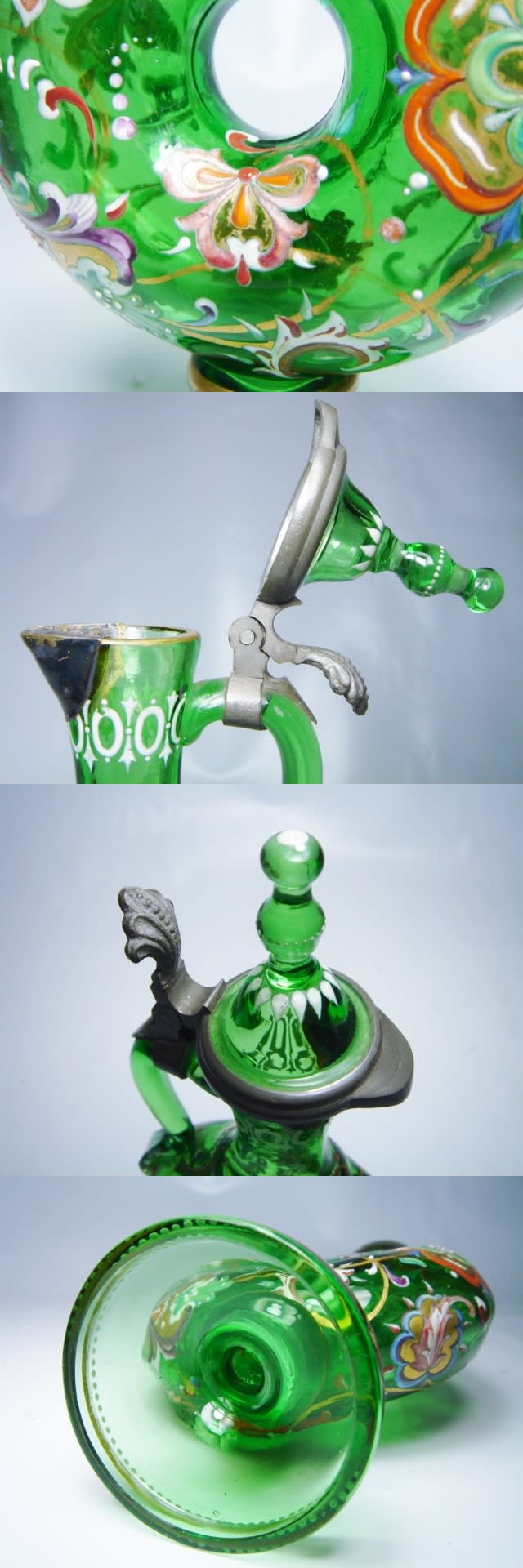Antique 1920-1925 Maioliche Artistiche Pesaresi (MAP) in Pesaro Italy pitcher Signed

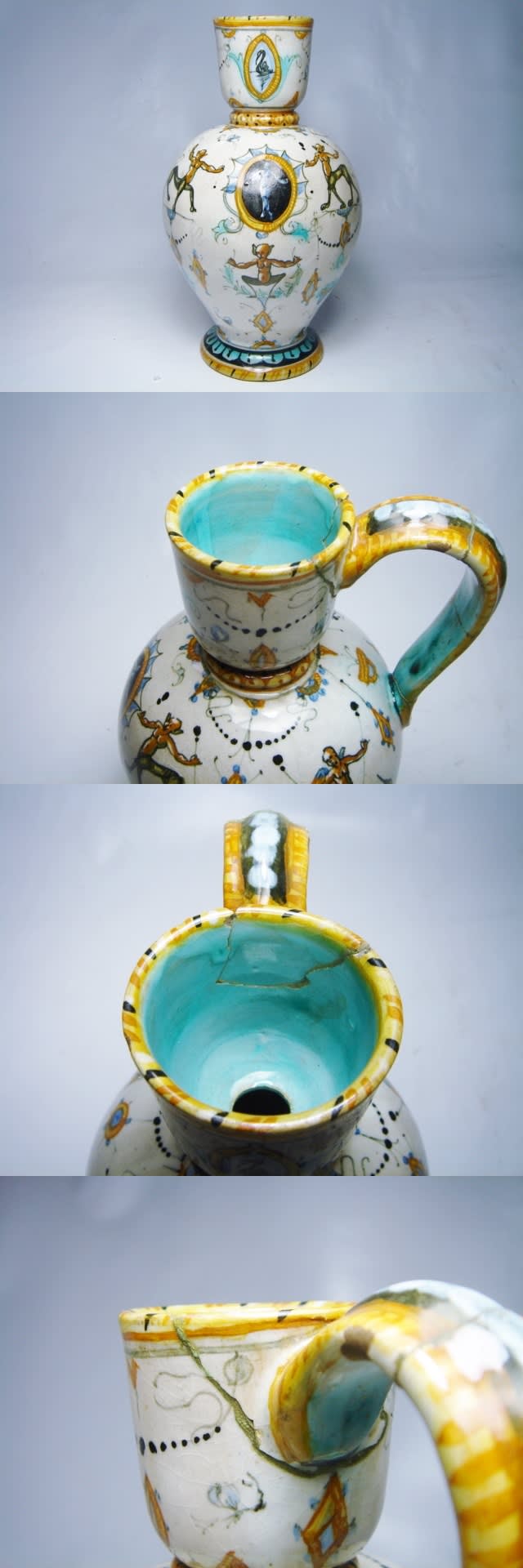




イタリア・マヨリカ陶器のピッチャーです。
マヨリカ焼き(Maiolica)は、イタリアの錫釉陶器(錫釉は不透明で真っ白な表面を生み出し、その上に絵付けしたときに鮮やかに映える。錫釉薬を全体に施して、火にかける前に金属酸化物などで絵を描く。フレスコ画のように釉薬が顔料を吸収し、間違っても後から修正できないが、鮮やかな発色を保つことができる。時には表面にもう一度釉薬をかけ、さらに光沢を強くすることもある。光沢を増すには、低温での火入れに時間をかける必要がある。窯には大量の木材が必要とされ、陶芸が盛んになるに従って、森林伐採が進んだ面もある。釉薬の原料は砂、ワインのおり、鉛、錫である。)で、ルネサンス期に発祥した。白地に鮮やかな彩色を施し、歴史上の光景や伝説的光景を描いたものが多い。地名呼称の表記のゆらぎによりマジョリカ焼、マヨルカ焼、マリョルカ焼、マジョルカ焼とも。(from Wiki pedia)
脈々と歴史を紡ぐマヨリカ(マジョリカの方が通りが良いかな?)のなんとも愛嬌の溢れた絵付けの施された作品で、M.A.P. - Maioliche Artistiche Pesaresiと名付けられたスタジオの1920年代の作品となります。
【M.A.P. - Maioliche Artistiche Pesaresi】
In 1915, together with his dearest friend and owner of the Cattabriga Furnace, Aristodemo Mancini and Mancini’s brothers Ettore, he opened his own ceramics company, Studio della Ceramiche Artistiche, which was located at 150 Viale Trento in Pesaro. The mark or logo he created for his studio was a stylized "F", in the form of a fierce mythological half lion, half eagle, griffin standing high on his hind legs, as might be seen on a page of an illuminated medieval manuscripts produced by the monks of the Dark Ages. Between 1915 and 1919 the trademark underwent several changes. In some cases the letters SDCA appears above the griffin and under it the letters MM for Mengaroni and Mancini. In other surviving examples there is written “Ferruccio Mengaroni AM Pisaurum”, sometimes accompanied by the year. Other pieces are marked simply FM & C.
In 1919, due to the success of SDCA some of the local ceramic artists were employed by Mengaroni’s firm in order to keep pace with production needs. In 1920 the firm reorganized itself under the name of Maioliche Artistiche Pesaresi (The Majolica Artists of Pesaro) and for the first time the griffin and initials M.A.P. appeared on their wares. 1920 was also the year that the company produced its first catalog, complete with photographs. By 1924 the company had more than 2000 molds that could be offered in one hundred twenty decorative motifs.
In 1925 Ferruccio Mengaroni’s life came to a tragic end. Aristidemo Mancini continued to operate the factory under the official name of AM & C, Mengaroni (Aristidemo Mancini and Company, Mengaroni). Over the years that followed the M.A.P. trademark was still used but the words “Made in Italy” were more frequently added in order to comply with trade regulations. In 1930, due to worsening economic conditions, the firm declared bankruptcy. In 1934, Electro Mancini, Aristidemo’s son, purchased the outstanding shares of M.A.P. from Mengaroni’s family and resumed operations. M.A.P. continued production until 1952 but it never approached the fame or vitality it had known during Mengaroni’s lifetime.
Among the more memorable and important artists and potters in the past who worked at MAP were notably Achille Wildi, Giulio Patrignani, Guido Andreani, Renato Giavoli, Mary Mancini, Ferruccio Fastigi, Tonino Naponelli and Giannetto Serafini.
古いものですので、装飾の薄くなったところの他に、割れ・欠け等の修復跡や擦れ・汚れもございますが、時代を超えて大切に受け継がれてきたことを思わせる、稀少な逸品です。
12cm(w) X 10cm(D) X 19.5cm(H)
お気軽にお問合せください。
コージーアンティークのHPはこちらから。。。

 にほんブログ村
にほんブログ村⇒応援クリックを宜しくお願い致します!!
Copyright 2006-2016 COZY CORPORATION 無断の利用・転載は固くお断りいたします。
/////////////////////////////////////////////////////////////////////////////////////////////////////////////////////////////////
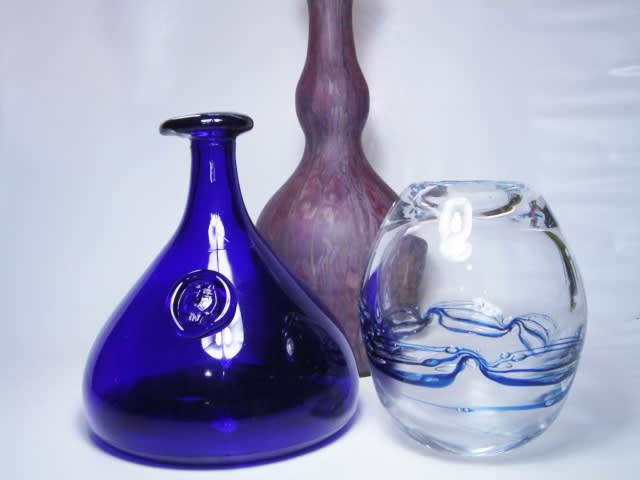




 にほんブログ村⇒応援クリックを宜しくお願い致します!!
にほんブログ村⇒応援クリックを宜しくお願い致します!!























